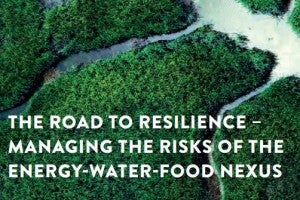 Wait – Ohio utility regulators did what?
Wait – Ohio utility regulators did what?
The $6-billion bailout of uneconomical coal and nuclear plants is bad enough. But the decision by the Public Utilities Commission of Ohio to let two power companies saddle ratepayers with their bad debt also sets a dangerous precedent that could have ramifications for consumers in other states.
This is more than a local rate case. It’s about traditional utilities going on the offense against new and cleaner power providers that offer cheaper rates in a competitive energy market – a drama playing out nationwide.
All eyes are now on the federal agency overseeing wholesale electricity markets to see if the Ohio deal will stand or fall. Read More
 Localized power grids that have the ability to disconnect from the main, centralized grid – known as microgrids – have become one of the electricity industry’s latest darlings. Particularly after Hurricane Sandy knocked out electric generators and wires along the Northeast coast in 2012, urban and utility planners have been devising localized grids that can operate autonomously, strengthen the overall power system’s reliability and resilience, and protect critical infrastructure like hospitals, water treatment facilities, and police stations in the event of a grid-wide outage.
Localized power grids that have the ability to disconnect from the main, centralized grid – known as microgrids – have become one of the electricity industry’s latest darlings. Particularly after Hurricane Sandy knocked out electric generators and wires along the Northeast coast in 2012, urban and utility planners have been devising localized grids that can operate autonomously, strengthen the overall power system’s reliability and resilience, and protect critical infrastructure like hospitals, water treatment facilities, and police stations in the event of a grid-wide outage. You probably have some sort of insurance – for your healthcare, car, house, or apartment. Acting on climate change is also like insurance. It is all about managing the risks.
You probably have some sort of insurance – for your healthcare, car, house, or apartment. Acting on climate change is also like insurance. It is all about managing the risks. On vacation and awake in my too-soft bed at 5 AM while my family snored, I was regretting my misaligned sleep schedule. But then I realized time was on my side, so I tiptoed out in solitude for sunrise at the south rim of the Grand Canyon. Thanks to my very clever smart phone that is also a camera, my amateur photos (sort of) reveal the majesty of this national landmark. When we realize the schedule of Nature’s
On vacation and awake in my too-soft bed at 5 AM while my family snored, I was regretting my misaligned sleep schedule. But then I realized time was on my side, so I tiptoed out in solitude for sunrise at the south rim of the Grand Canyon. Thanks to my very clever smart phone that is also a camera, my amateur photos (sort of) reveal the majesty of this national landmark. When we realize the schedule of Nature’s  California has a nice problem: It’s producing so much clean solar energy that the state’s electric grid is at capacity, and sometimes beyond.
California has a nice problem: It’s producing so much clean solar energy that the state’s electric grid is at capacity, and sometimes beyond..jpg) By
By